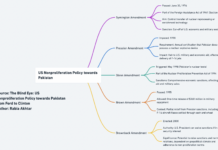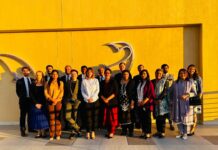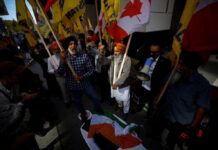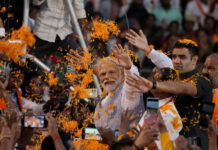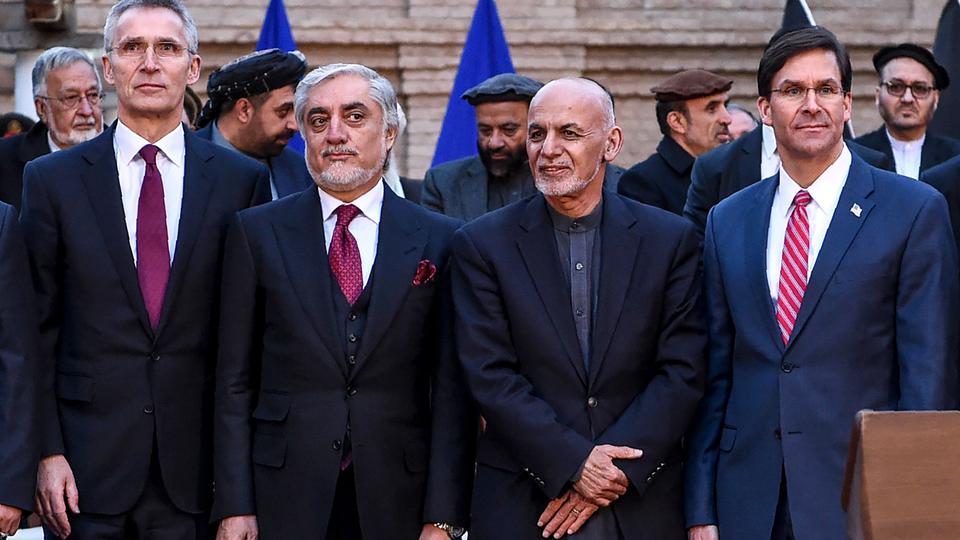Rahimullah Yousafzai
Two positive developments in recent days have raised hopes after weeks of uncertainty that the implementation of the Taliban-U.S. peace deal signed in Doha, Qatar on February 29 may finally begin. Though the March 10 timeline for the exchange of prisoners and starting the intra-Afghan negotiations has already been missed, it would still be an achievement if these two difficult tasks are completed even if belatedly.
One welcome development was the understanding reached during a video-conference between the representatives of the Afghan government, who participated from Kabul, and the Qatar-based Taliban on March 25 to start releasing the prisoners from March 31. It was the first direct interaction between the Taliban and Afghan government even though it was a virtual meeting via video-conference rather than a face-to-face meeting. Until now, Taliban have refused to recognize the legitimacy of the Afghan government or engage with it in any dialogue.
The government of Qatar and the U.S. played a role to make the breakthrough possible by taking part in the video-conference. The International Committee of the Red Cross (ICRC) was made part of the arrangement due to its neutrality to provide support for the release of 5,000 Taliban prisoners in exchange for 1,000 government men being held by the Taliban. The divergent views of the Afghan government and Taliban on the prisoners’ issue were a major hurdle and had to be removed for the intra-Afghan talks to begin.
The U.S. had committed in the Doha peace agreement that the Taliban prisoners would be freed, but President Ashraf Ghani objected to it as his government was not part of the deal. He put up conditions, including reduction in Taliban violence and an undertaking by the Taliban prisoners not to return to the battlefield, but Taliban rejected these terms. In fact, the U.S. was responsible for creating the impasse on the prisoners’ issue by using different language in the Doha deal and the joint U.S.-Afghanistan declaration, which was also signed on February 29, in Kabul in presence of Mark Esper, Secretary of Defence, Ghani, Abdullah and other Afghan politicians. The Kabul declaration said “Afghan government will participate in U.S.-facilitated talks with Taliban representatives on confidence building measures, including determining feasibility of releasing prisoners on both sides.” It seems the U.S. had to do this to oblige Kabul, which was worried that it was not getting anything in return for releasing the Taliban prisoners. This enabled the Afghan government to highlight its role in determining the release of Taliban prisoners.
The second positive thing happened on March 27 when President Ghani’s government finally announced a 21- member negotiating team, led by former intelligence chief Masoom Stanakzai and including five women, to hold talks with Taliban representatives. The list includes a number of opposition figures and Zalmay Khalilzad, the U.S. special envoy for Afghanistan Reconciliation has described it as inclusive. This composition of the negotiating team was a contentious issue as Ghani’s political opponents as well as the Taliban were questioning his right to name the team and the U.S. was pushing for an inclusive national delegation to negotiate with the Taliban on issues concerning Afghanistan’s future. Though the list is still being opposed by the Afghan opposition parties, it is the beginning and the opposition could be accommodated further in case Ghani and his main electoral rival Abdullah Abdullah reconcile with one another on the issue of the contested outcome of the September 28 presidential election.
Taliban too have rejected Kabul’s negotiating team and refused to negotiate with it by arguing that it does not represent the whole spectrum of the Afghan society, including the various political groups that are not part of the government. Though the Afghan government responded by telling the Taliban that it was none of their business, this is emerging as yet another contentious issue that could delay the intra-Afghan talks.
The Ghani-Abdullah reconciliation has not happened and both continue to claim legitimacy as the president of Afghanistan despite mediation efforts by senior Afghan politicians Hamid Karzai, who remained president of the country for 13 years after the fall of Taliban regime in December 2001, and former mujahideen leader Prof Abdul Rab Rasool Sayyaf. The U.S. too tried to resolve the dispute first through mediation by the Afghan-born Khalilzad who stayed put in Kabul for an unusually long time. Mike Pompeo, the U.S. Secretary of State, then came on an unannounced one-day visit to Kabul to reinforce Khalilzad’s mission despite the risks involved due to coronavirus, which is slowly spreading across Afghanistan as a large number of Afghan refugees continue to return home from virus-hit Iran. Pompeo’s efforts also failed and he reacted by issuing a harsh statement criticizing both Ghani and Abdullah for damaging U.S.-Afghanistan relations and announcing a $1bn cut in U.S. assistance to Afghanistan this year, an equal amount in 2021 and a review to consider further reductions in aid.
In what appears to be a carrot-and-stick approach, Pompeo said the decision to cut the U.S. aid could be reversed in case Ghani and Abdullah reconciled. Though Ghani tried to downplay the impact of the reduction in U.S. assistance and also issued instructions to his ministers to cut down expenses to save $1bn, Abdullah was more realistic when he commented that there can be no compensation for the reduced American aid to Afghanistan. As the U.S. provides only $500 million annually for civilian works, the reduction in aid would impact the security assistance, which is more than $5bn a year, and make it hard for Kabul to maintain, equip and pay its 350,000-strong Afghan National Defence Security Forces (ANDSF). The ANDSF has to sustain the beleaguered Afghan government in power and keep the Taliban fighters at bay until the intra-Afghan negotiations make progress for ending the war. President Ghani has said on record that his armed forces could collapse in six months if the international security assistance dried up. President Donald Trump added to the uncertainty through his alarming statement that the Taliban could capture power once the U.S.-led NATO forces complete the withdrawal from Afghanistan under the terms of the Doha agreement in the next 14 months.
The havoc caused by the coronavirus worldwide has also contributed to the uncertain situation in Afghanistan. There has been no outbreak of the disease yet in the country and the cases reported until now appear to be manageable. However, the lack of a proper healthcare infrastructure in Afghanistan and the lack of testing services seem to be two reasons for the low number of COVID-19 cases. Also, the situation could get out of control if the Afghan refugees returning from Iran, one of the hardest hit countries in the world, start testing positive and spreading the disease. Afghan officials noted that since the start of 2020 about 64,000 Afghans have been deported or had voluntarily returned from Iran. An Afghan minister had earlier reported that 10 Afghan refugees had died due to coronavirus in Iran.
It is now a matter of urgency that the prisoners’ exchange between the Afghan government and Taliban is completed as soon as possible because Afghanistan’s overcrowded prisons could be affected by the fast-travelling coronavirus. The Afghan government has already decided to release 10,000 prisoners, but they are mostly juveniles, women, the elderly and those held for minor crimes.
The economic crises triggered by the coronavirus could severely affect the U.S.’ capacity to continue providing assistance to other countries, including Afghanistan. It would focus on its own battered economy due to the huge losses suffered by it due to the outbreak of the virus amid reports that the U.S. economy could contract by 25 percent and unemployment may reach 20 percent. The $2 trillion relief package announced by the Trump administration may not be enough to revive the economy.
Even before the COVID-19 outbreak, Trump had been publicly voicing his opinion that reflected his intention to gradually give up the US responsibility toward Afghanistan. He noted that every country has to defend itself and the U.S. after defending Afghanistan for 20 years cannot protect it for another 20 years. The cut in U.S. aid to Afghanistan was bound to take place sooner or later, though the Ghani-Abdullah dispute prompted Washington to reduce its assistance earlier. The Afghans, whether those in power or in opposition, would have to consider national rather than personal interest as they compete for power as international assistance post-coronavirus for Afghanistan could be drastically reduced. They have to capitalize on the Doha deal which has provided the best opportunity after nearly two decades of war to make Afghanistan peaceful and stable.
Peace in Afghanistan is a wish of not only Afghans, but also people all over the world, particularly regional countries that face negative fallout of the long-running Afghan conflict. As Afghanistan has become sanctuary of militants with different agendas and is the major source of drug-trafficking and gun-running, many countries are seeking peace and stability in the war-torn country in the hope that these problems would be overcome in case the peace process takes hold. For Iran and Pakistan, the added incentive would be return of Afghan refugees burdening their economies. However, it would be unrealistic to expect peace to return to Afghanistan in the near future as the already delayed intra-Afghan negotiations would be difficult and challenging and would face breakdowns due to the deep differences between the Afghan government and Taliban.
Rahimullah Yusufzai is the Resident Editor at The News International, Peshawar and is a Correspondent of BBC World Service.



